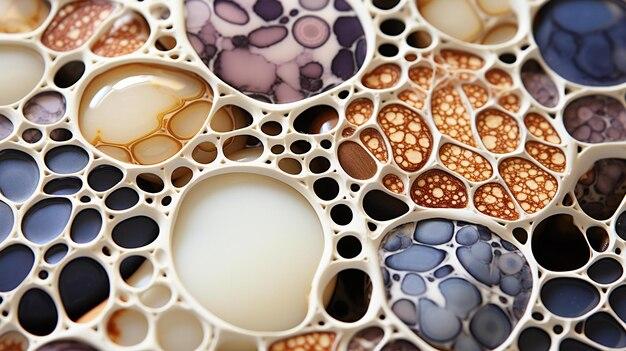Patrocinado
Bioceramics: Engineered Ceramics for Medical Applications

Bioceramics are a special class of ceramics that are engineered for use in medical applications and body implants. These include replacement parts for bones, teeth, cartilage, tendons, heart valves, sutures, and more. They take advantage of ceramics' desirable properties like strength, corrosion resistance, and hardness, while also being biocompatible. This allows them to integrate seamlessly with living tissues in the body.
Types
There are three main types based on their chemical composition and formed for specific medical uses:
Bioinert or Non-resorbable Bioceramics
Alumina and zirconia ceramics fall under this category. They are highly resistant to corrosion and wear but do not facilitate any biological activity. Common applications are artificial hip and knee joints where permanence is crucial. Their bioinert nature prevents formation of fibrous tissue encapsulation which can lead to implant failure.
Bioactive Bioceramics
These Bioceramics like hydroxyapatite and glass ceramics can chemically bond to living bone through formation of a strong interfacial bond called hydroxyapatite layer. This quality of bioactivity allows for implant fixation through osteointegration with new bone growth at the implant surface. They are used as coatings on metallic implants or in powder form as bone grafts.
Bioresorbable Bioceramics
Made from calcium phosphates like tricalcium phosphate, these they degrade and dissolve gradually post implantation to allow new bone regeneration. They serve as temporary scaffold and get replaced by the patient’s own bone. Applications include repair of bone fractures, periodontal bone defects and maxillary sinus floor augmentation. The resorbable nature eliminates need for implant removal.
Fabrication
Ceramic materials can be synthesized and fabricated using different methods for the final implant application:
- Sintering is a high-temperature process that compacts ceramic powders and develops strength through bonding of particles. Parameters like temperature, pressure and heating/cooling rates affect the microstructure.
- Hydroxyapatite and glass ceramics are produced using high-temperature melt-quench techniques followed by heat treatment to crystallize specific phases.
- Thin films and coatings are deposited using plasma spraying, sol-gel coating and discrete coating methods like electrophoretic deposition to impart desirable surface properties.
- Advanced fabrication routes involve slip casting, gel casting, 3D printing, fiber reinforcement etc. to create components of complex shapes and structures.
- Finishing steps involve grinding, polishing and other machining to achieve the final dimensions, tolerances and smoothness as specified.
Testing and Regulatory Standards
They undergo rigorous testing to prove their safety and efficacy as medical implants before clinical usage:
- Mechanical tests determine strength properties like fracture toughness, fatigue resistance under dynamic loading.
- Chemical stability is assessed by immersing in simulated body fluids and analyzing corrosion/dissolution behavior and ion release over long periods.
- Cytotoxicity or biocompatibility is proved using cell culture experiments and implanting in animal models to study tissue response.
- Sterilization validation ensures implants can withstand high-temperature sterilization methods like autoclaving.
Regulatory bodies like FDA approve new bioceramic materials and devices based on testing adherence to international standards ISO 10993 for biocompatibility and ISO 5832 for mechanical performance of implants. Only upon rigorous evaluation and clinical trials can these engineered ceramics enter mainstream medical applications.
Future Prospects
Advancements in bioceramic synthesis, surface engineering and 3D printing are paving way for new opportunities. Resorbable ceramics combined with growth factors/drugs promise to revolutionize repair of complex fractures and bone defects. Nanocrystalline bioceramics with enhanced mechanical and biological properties are being developed. Multifunctional ceramics capable of stimulating specific cell responses hold promise for regenerative therapies. Overall, bioceramics catering to an individual’s need through customization will play a key role in improving healthcare outcomes. Continued material and clinical research will take this field to new heights in serving humankind.
Get More Insights: Bioceramics
For More Insights Discover the Report In language that Resonates with you
About Author:
Money Singh is a seasoned content writer with over four years of experience in the market research sector. Her expertise spans various industries, including food and beverages, biotechnology, chemical and materials, defense and aerospace, consumer goods, etc. (https://www.linkedin.com/in/money-singh-590844163)


